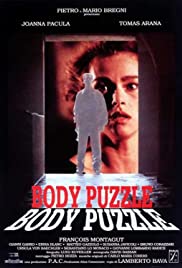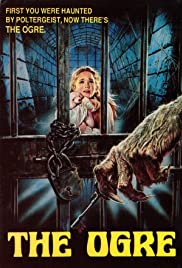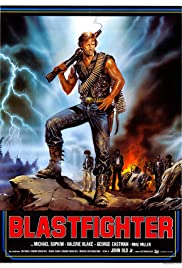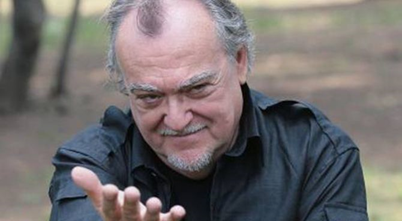This profile marks the first in what will most likely be a series of Director Spotlight write-ups I’m planning to post here. They are structurally composed of an overview of the director describing his/her aesthetics and style followed by capsule reviews of some of their films, usually less well-known titles in their filmographies that may not have as much exposure but still provide value in shining a light on the career of the director in question. First up, the son of one of the greats, Lamberto Bava!
Being the son of a famous director and wanting to be a director yourself can be a double-edged sword. On one hand, if your father is supportive of your aspirations like Lamberto’s father, the great master of gothic horror Mario Bava, was then you may be given chances in the industry due to nepotism that many wouldn’t get otherwise. Years before getting a shot at his first solo directing work Macabro (1980), Lamberto worked on several of his father’s pictures as an assistant director and eventually co-directed a TV film with his father called La Venere d’ille shortly before his feature debut. So what could possibly be the downside? Well, ask Joe Hill or Colin Hanks. When you have a famous parent, getting out from under their shadow and getting people to appreciate your talent apart from them can be difficult. Joe Hill used the Hill pseudonym to distance himself from his famous father Stephen King to prove he could make it without him, and Colin Hanks, despite critically acclaimed roles like his stint on the first season of Fargo, is still known as Colin “son of Tom” Hanks to most people. Whether conscious or not, Lamberto’s films tend to go in bold, sometimes strange directions that sets him apart from his father in many ways. While they both deal in horror, Lamberto tends to not rely on the thick atmosphere and overtly stylish sequences his father was known for. Instead, he leans more into perverse acts, over-the-top set pieces and disorienting or off-kilter deaths. While I don’t feel like his films ever truly rose to the heights of his father’s best, movies like Demons and A Blade in the Dark hold their own as classic genre fare.

Body Puzzle
Body Puzzle involves a pretty standard setup for a giallo. A detective is trying to track down a killer who murders people and steals their body parts. The film reveals the killer early on, so the mystery lies in the motive rather than who the killer is. And what a weird motive it is indeed… Like many other mid-tier giallo, especially from the ’90s, the film is at its best during the kill sequences, particularly one in a school for the blind. The ending reveal is also delightfully loopy. Unfortunately, the procedural elements between the kills are about as dull as dishwater and filmed about as energetically.

Dinner with a Vampire
This TV movie may be the closest I’ve seen Lamberto Bava come to the sort of gothic horror his father often dealt in (at least until Lamberto actually remade his father’s famous film Black Sunday in the late ’90s). Unfortunately, instead of playing it straight with an atmospheric castle horror film along the lines of Antonio Margheriti, Bava adds a healthy dose of comedy that really doesn’t work all that well in this film about a vampire cum horror director who invites the cast of his new film to his spooky old castle for the evening with the intent of asking them to kill him before dawn because he’s grown weary of living. It’s an odd setup with some promise that doesn’t quite stick the landing, but it still has enough campiness and oddness to it to keep me engaged.
*As a side note, this one is in desperate need of an upgrade. The DVD from Mya has absolutely horrible mono sound on the English dub and no English subtitles for the Italian audio.

Demons III: The Ogre
This is another of several TV movies Lamberto Bava made in the ‘80s and is maybe a little better overall than Dinner with a Vampire despite its incredibly anti-climactic ending. The Demons III tag this film got on its video release is purely a marketing stunt though, having nothing to do with the previous two Demons films. The only connection I could make, and it’s a VERY big stretch, is that the flashback sequences did remind me a little of the fairy tale horror of Dario Argento’s Susperia, and Argento had co-written and produced Demons 1 & 2. Eh, I’m probably reaching…

Blastfighter
For a long time based solely on the cover of Michael Sopkiw holding a big gun with lightning behind him, I had assumed this was a post-nuke movie. Imagine my surprise to discover that it’s a backwoods redneck revenge movie instead! I actually thought this one was pretty good. The pacing is a little slow in the first half, but once Sopkiw and his daughter begin fleeing from the rednecks, it picks up considerably, leading to a delightfully explosive finale. It’s not a perfect movie, but it definitely has a different feel than many of Bava’s other films and has some very fun sequences.

Delirium
Delirium is one of the stranger gialli I’ve seen recently. The setup of a fashion model being stalked by an obsessive killer isn’t the most original, but the execution (no pun intended) is what sets this one apart. The murders are diverse and offbeat in and of themselves, from pitchfork stabbing to killer bees (!?), this isn’t your typical “black-gloved killer with a big knife” kind of giallo. Additionally during the kill scenes, when the movie switches to the killer’s point of view, the women take on grotesque visages like giant eyeballs for faces or insect heads. It’s pretty damned unsettling, weird and unexplainable. The movie does drag at times in between kills like many gialli, but it does have a really good, very suspenseful sequence in a mall department store strewn with mannequins shot in a very stylish way. Overall, this is definitely the better of the two Bava gialli seen for this write-up.

